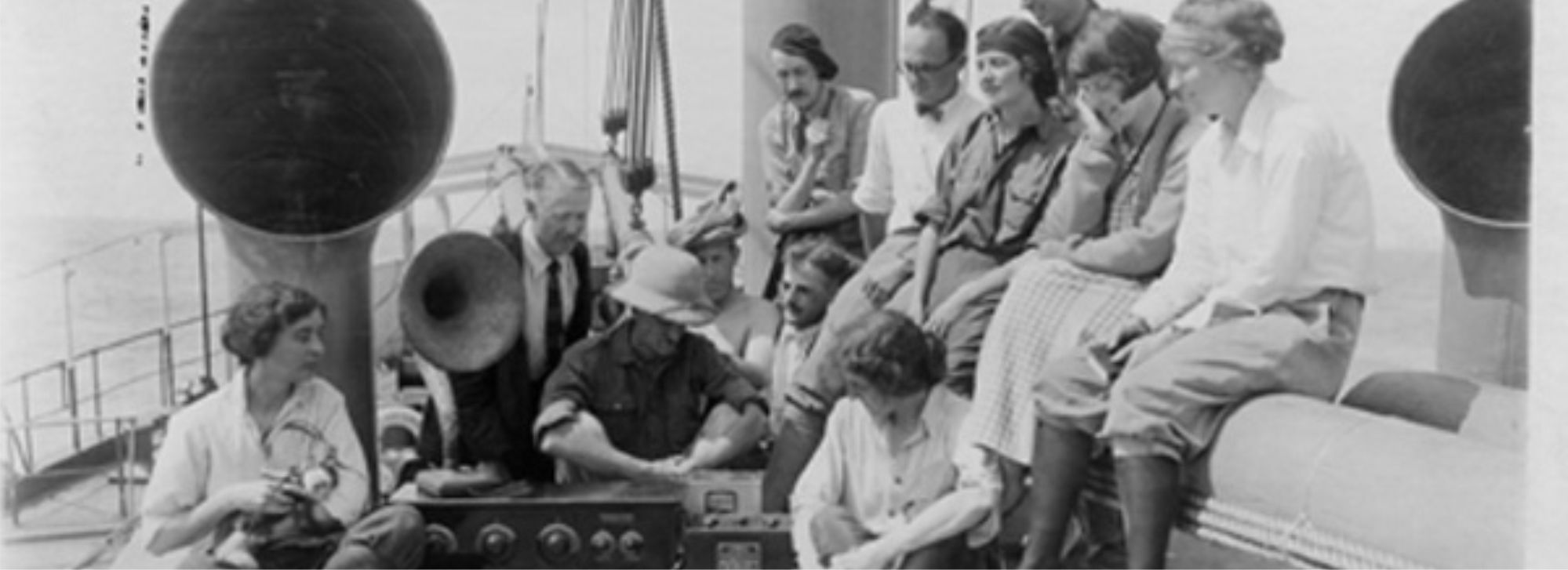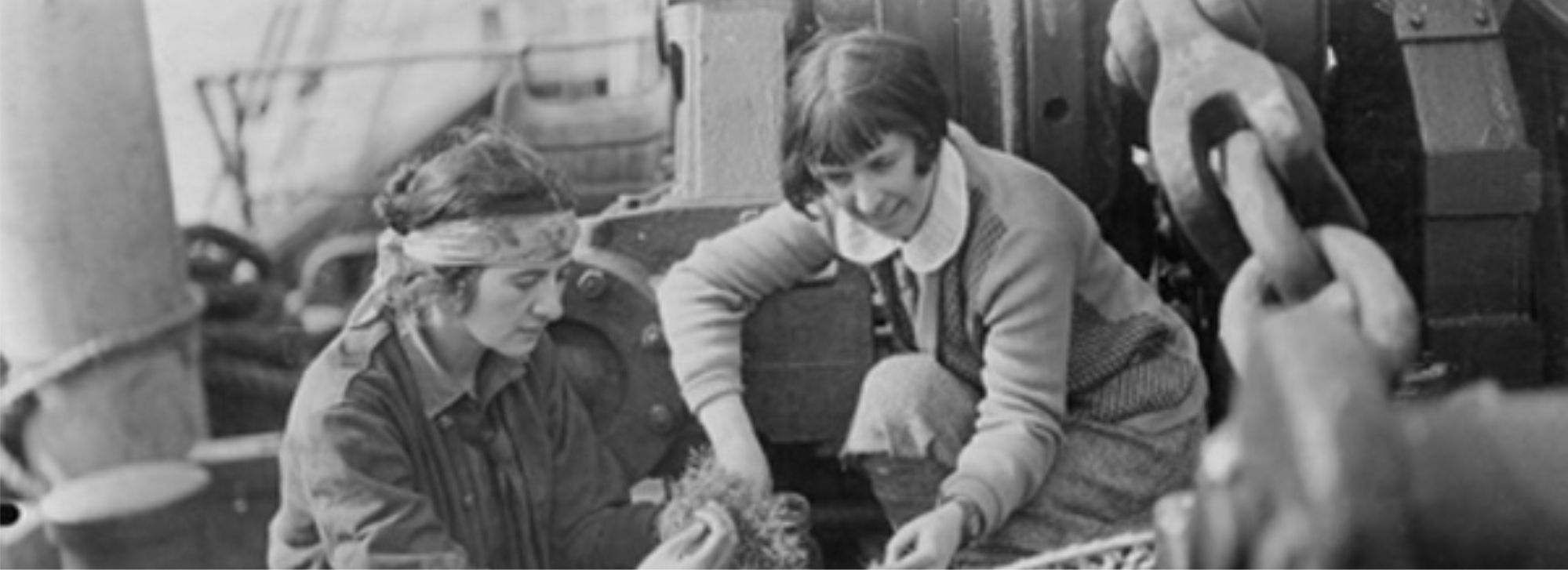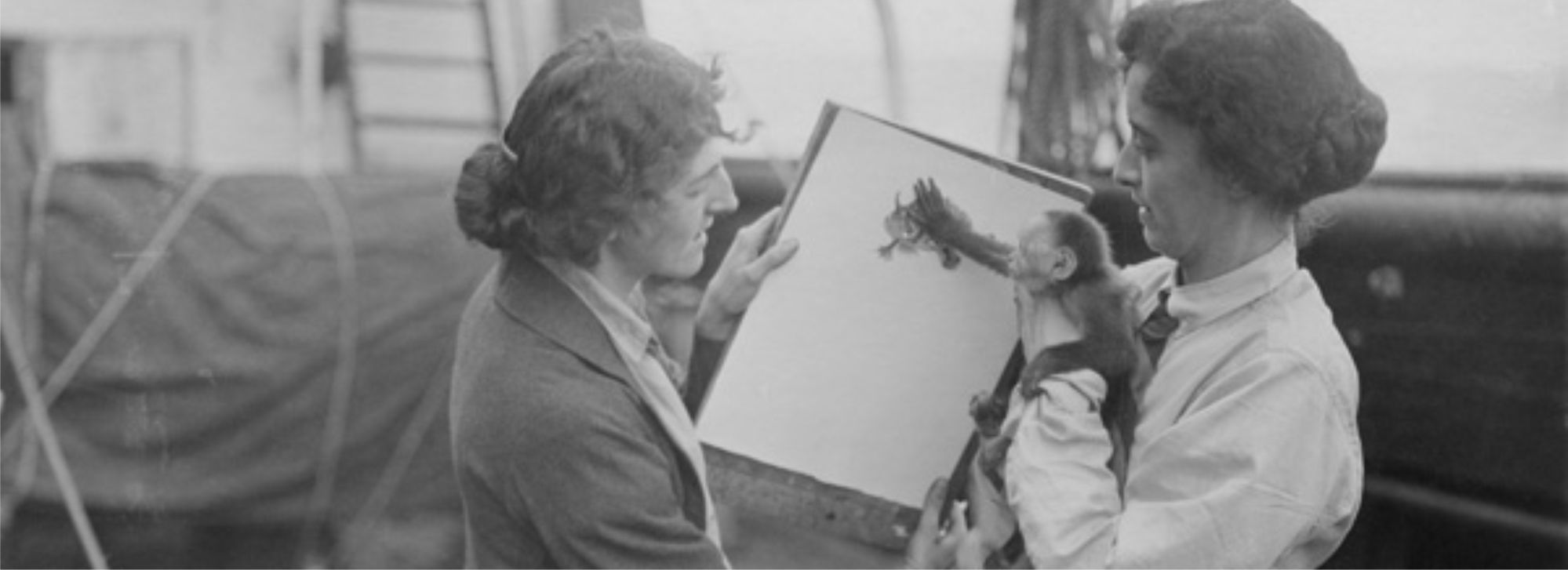Feminine presence in the islands
The scientists of the Noma and the Arcturus
In 1923, American entrepreneur and billionaire Harrison Williams financed an expedition to the Galapagos Islands led by naturalist, explorer, and author William Beebe. At the time, Beebe was the director of the Department of Tropical Research (DTR, created in 1918) within the New York Zoological Society — nowadays, the Wildlife Conservation Society. Back then, the NYZS had its headquarters at the Bronx Zoo, created in 1899 by the Society itself and managed as the "New York Zoological Park and Gardens".
Beebe, who had developed a long and fruitful career as the first curator of ornithology of the Zoo (1899), was eager to visit the Galapagos to collect further data supporting Darwin's evolution theory.
Williams provided a 76 m steam yacht, the Noma, and allowed a support crew which included several scientists and artists, most of them from the DTR and, therefore, linked to Beebe. The expedition lasted 20 days, during which the Galapagoan biodiversity was thoroughly documented. One of the many outcomes of the journey was a book, Galapagos: World's End — an instant best-seller which inspired many travelers to visit the islands, and even to remain there as the earliest colonists.
On the crew of the Noma there were three women who were among the first (if not the very first) female professionals / scientists to visit the archipelago: Ruth Rose, Isabel Cooper, and Marie Poland Fish.
Both Rose and Copper had worked before with Beebe in the British Guianas, in the summer of 1916. They traveled to create the first tropical research station in the jungles: Kalacoon, near Bartica. There, the idea of the "Department of Tropical Research" was born. Both women went to the Galapagos aboard the Noma and would return to the islands two years later in the Arcturus, also with Beebe.
Considered a "bohemian" and an iconoclast at his time, Beebe choose to hire women for prominent roles inside the DTR, including scientists as Gloria Hollister and Jocelyn Crane, and artists as Isabel Cooper, Anna Taylor, Rachel Hartley, Helen Damrosch Tee-Van, and Else Bostelmann. Inside DTR, artists were far more than illustrators: they were communicators, in a moment when photography was not yet able to capture movements or structural details.

Ruth Rose's story is quite peculiar. She was born in 1896 in New York, the daughter of a playwright, and she was originally an actress, having worked in a few plays in Broadway. During an actors' strike, and despite her absolute lack of experience, she got a job as a research assistant in the New York Zoological Society. She was so good at it that she ended becoming an expert research technician.
Working at the DTR, she started collaborating with Beebe. After several journeys (including the one to the British Guiana), she went to Galapagos in the Noma and wrote two chapters of Galapagos: World's End. In 1925 she travelled aboard the Arcturus as the "historian and technician" of the expedition. In collaboration with Beebe, she wrote The Arcturus Adventure.
While working in the Arcturus, Rose met American cinematographer Ernest Schoedsack, who was documenting the journey. They married and Rose started working with her husband. In 1933, she created the script of the classical movie King Kong, co-directed by Schoedsack and Merriam C. Cooper.
Rose produced several other scripts, such as Blind Adventure (1933), Son of Kong (1933), She (1935), The Last Days of Pompeii (1935), and Mighty Joe Young (1949). She died in 1978.

Isabel Cooper was an American, New York-based artist who worked in all the imagery of the Noma and the Arcturus expeditions. In Galapagos: World's End, 24 color illustrations by Cooper were included. One of the photographs taken during the Arcturus expedition features Rose and Cooper alongside the ship’s pet capuchin monkey, Chiriqui. Her correspondence with her husband and her portfolio are valuable documents to understand the scientific journeys of that period, especially Beebe’s. Her drawings and paintings were recently collected in an exhibition, Exploratory Works: Drawings from the Department of Tropical Research Field Expeditions (organized by M. Dion, K. McLeod, and M. Thompson, 2017).
Finally, both in the Noma and in the Arcturus traveled Charles J. Fish and his wife, Marie "Bobbie" Dennis Poland Fish. They were marine biologists, and they specialized in fishes. Poland was known by her bioacoustics research, but during the Arcturus expedition she was able to identify the eggs of the American eel — the first person to do so, and to describe the complete developmental cycle of the elusive fish (which was published in Science and in Zoologica, among others).
Rose, Cooper, and Poland kickstarted a long (and sometimes regrettably underrepresented and undervalued) tradition of female scientists in the Galapagos Islands. A tradition that is continued today by the many women working at the Charles Darwin Research Station.
[The photographs that illustrate this text belong to the collection of the Wildlife Conservation Society, and were published by Allison Grillo on the WCS blog on December 23, 2014, as part of a document digitization and recovery process].
References
Beebe, William (1981). The Arcturus Adventure. New York: Harper & Row.
Beebe, William (1988). Galapagos: World's End. New York: Dover Publications.
Text & picture: Edgardo Civallero (edgardo.civallero@fcdarwin.org.ec), Widllife Conservation Society Archives
Publication date: 1 May 2022
Last update: 1 May 2022
